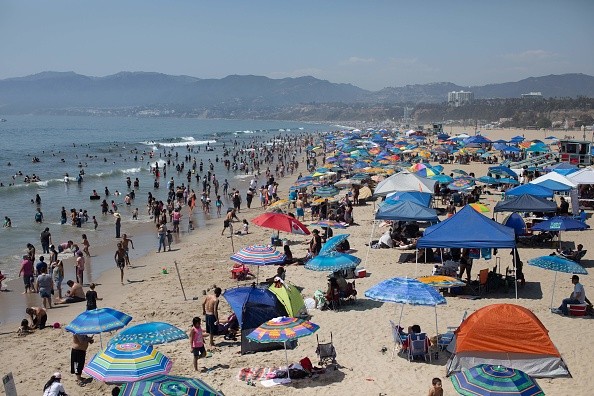Western United States is warming faster than any region in the country in terms of rising daytime highs, a pattern that became obvious with the unusual and record-shattering heat wave that got the best part of the Pacific Northwest earlier this summer.
This year, heat has been increasing all across the west. Last month, places like Arizona, Utah, Idaho, Nevada, and California had record heat statewide. Salt Lake City saw its warmest June in about 74 years of records with an 80.2 F average temperature (8.6 degrees Fahrenheit above normal).
Seattle concluded last month with over 5 degrees above average, while Portland, Oregon finalized the month with an extremely surprising 7 degrees above average. The heat took the lives of hundreds in U.S and Canada. North America as a continent felt its hottest June in documented history last month.

Active Drought
Much of the northern Plains, Southwest, and central Rockies were dealing with extreme drought, while a small patch of the drought was also present in the Pacific Northwest.
As per Paul Pastelok, AccuWeather Senior Meteorologist, the Southwest has been experiencing "decadal, long-term drought."
Spring drought aids in the enhancement of the risk of severe heat and drought in the summer because of a positive feedback mechanism. Since the moisture in the ground is little, more of the energy from the sum goes straight to heating the surface, making the surface dry out even more.
Lack of Monsoonal Rain Last Summer
Monsoonal moisture makes major rainfall available for the Southwest, and in both 2020 and 2021, that moisture was greatly insufficient. Last year's summer, the placement of the upper high-pressure region over the Southwest was almost constant, bringing about an extended duration of heat and increased evaporation rates that resulted to expanding drought conditions.
This year, precipitation stopped towards the end of winter and spring, rapidly increasing snowmelt across the interior West and California, which prepared the stage for the severe summer heat. This summer, monsoonal rain is back with lethal force across the American Southwest.
La Niña
In a normal La Niña pattern, storms that occur during the western wet season, which starts from October to April, usually shift farther north, letting points to the south desiccate. Toward the end of the wet season, these impacts began to have an effect with dry conditions bringing about higher evaporation and producing higher pressure upwards, resulting in a more powerful heat dome.
Water Temperature Above-normal in the Northeastern Pacific
Water temperatures may have also contributed to causing severe heat in the West. A large region of above-average sea-surface temperature oddity has been extended across the northeastern Pacific close to the West Coast this summer.

Climate Change
The greatest warming over the last 30 years, when it comes to maximum temperatures in the months of June and July has taken place in the western United States, implying that the record warmth attained past few months is not too surprising.
Related Article : Heat Wave: Masked Dangers of this Excessive Hot Weather
For more news, updates about heat waves and similar topics don't forget to follow Nature World News!
© 2026 NatureWorldNews.com All rights reserved. Do not reproduce without permission.





